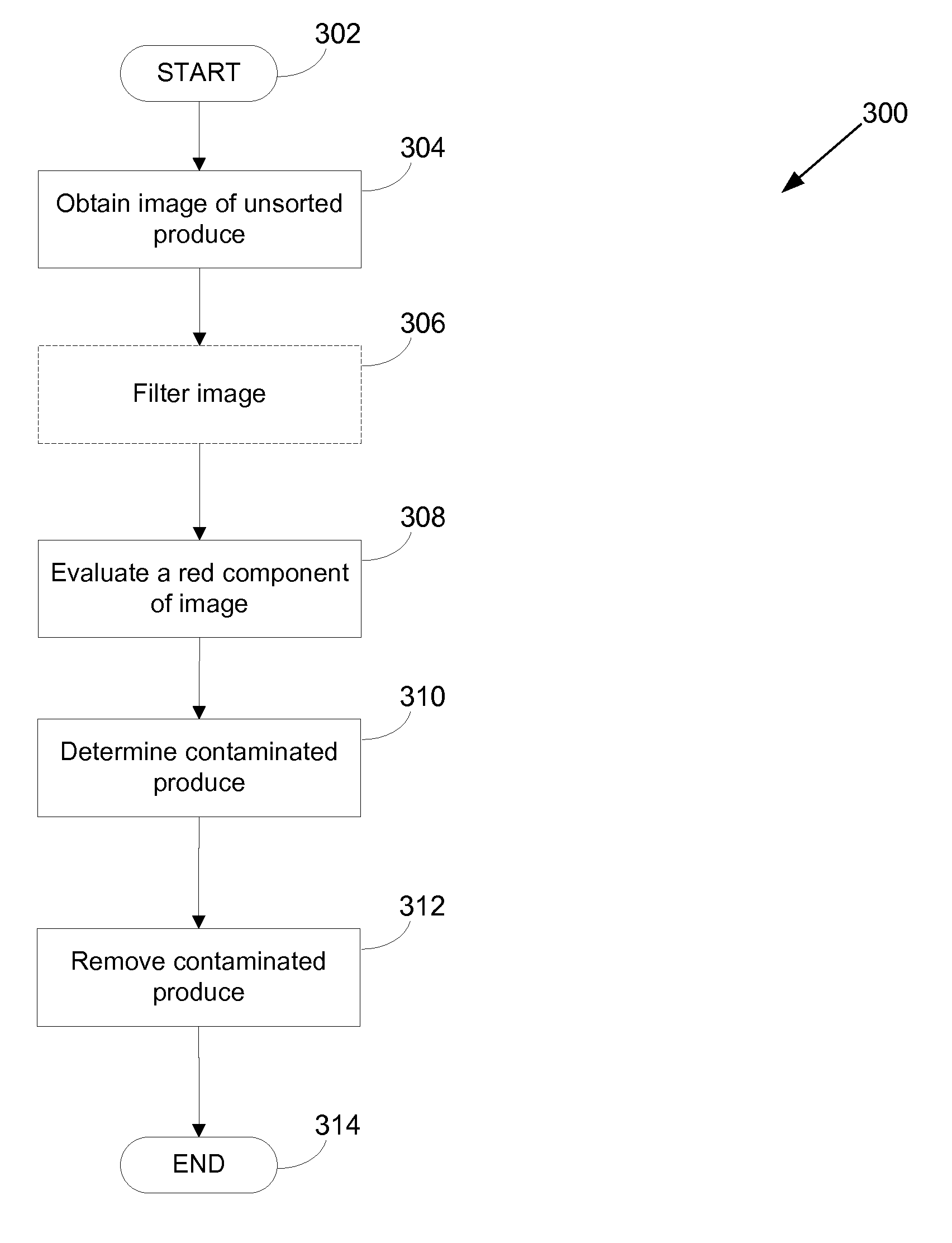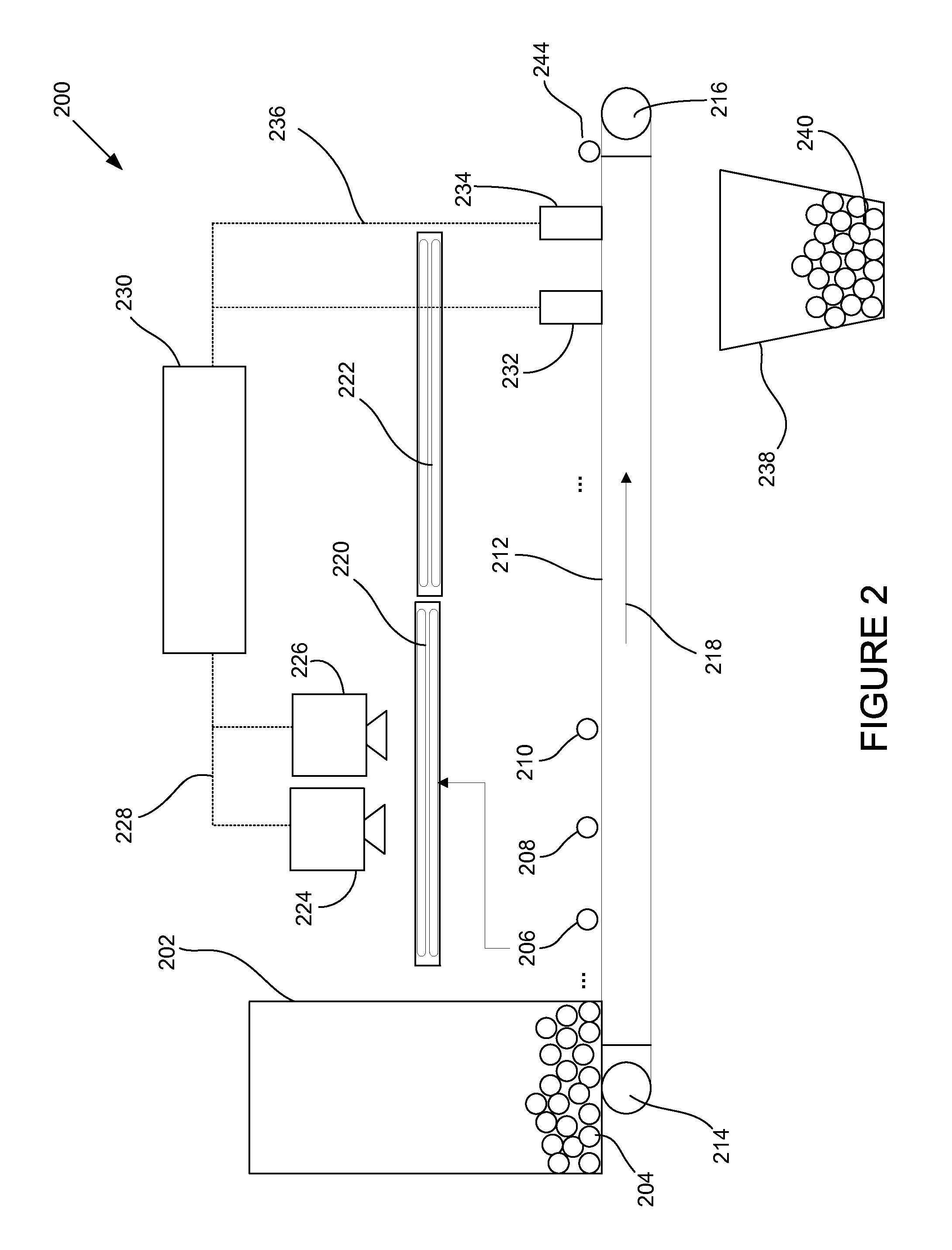System and method for aflatoxin detection
- Summary
- Abstract
- Description
- Claims
- Application Information
AI Technical Summary
Benefits of technology
Problems solved by technology
Method used
Image
Examples
example 1
Experimental Setup
[0091]In a dark room, a separation table was set up. A wide band BL lamp was selected based on one or more factors, including cost. A BL lamp model 7020 E-BL manufactured by Lights of America, with a Light Bulb RB17T8BL was placed on top of the table at a distance of 30 cm. The BL lamp model is a 17 Watt wide band (360 nm to 520 nm bandwidth) “Fluorescent Tube”.
[0092]Between about 5-10 pounds of machine-rejected almonds were collected. The machine-rejected almonds were rejected by a blue-green fluorescence color-sorter. Samples of almonds were separated by hand from the machine-rejected almonds. Each sample included about 50 grams of almonds.
[0093]Sample BL-Aflatoxin was selected by hand based on visual inspection for red fluorescence in the presence of BL.
[0094]Sample BL-Blanched was selected based on the presence of yellow, yellow-brown, blue and dark spots indicative of other damage after blanching a portion of the sampled almonds to remove the almond skin.
[0095...
example 2
Liquid Chromatography Testing
[0098]Destructive Liquid Chromatography (“LC”) analysis was performed on the six samples to identify an aflatoxin level for each sample. Individual samples were sent for aflatoxin testing at Paramount Farms Laboratory where the samples were tested by LC.
example 3
[0099]Fluorescent pictures taken of the samples were further processed for color content analysis. A series of single-nut images were cropped from the sample images. The single-nut images were then further processed. Specifically, the red channel of the RGB color space images was used to generate corresponding red band histograms.
[0100]The single-nut images were selected to emulate an image of an individual nut generated and evaluated in color-sorting equipment. A BL-Aflatoxin single-nut image (image a) was selected from the BL-Aflatoxin sample image. A BL-Blanched Dark Spot single-nut image (image b-d) was selected from the BL-Blanched sample image. A BL-Blanched Yellow Spot single-nut image (image b-y) was selected from the BL-Blanched sample image. A Machine-Rejected single-nut image (image mr) was selected from the Machine-Rejected sample image. A portion of the BL source image (image s) was also selected to evaluate the incident light.
[0101]The single-nut images a...
PUM
 Login to View More
Login to View More Abstract
Description
Claims
Application Information
 Login to View More
Login to View More - R&D
- Intellectual Property
- Life Sciences
- Materials
- Tech Scout
- Unparalleled Data Quality
- Higher Quality Content
- 60% Fewer Hallucinations
Browse by: Latest US Patents, China's latest patents, Technical Efficacy Thesaurus, Application Domain, Technology Topic, Popular Technical Reports.
© 2025 PatSnap. All rights reserved.Legal|Privacy policy|Modern Slavery Act Transparency Statement|Sitemap|About US| Contact US: help@patsnap.com



